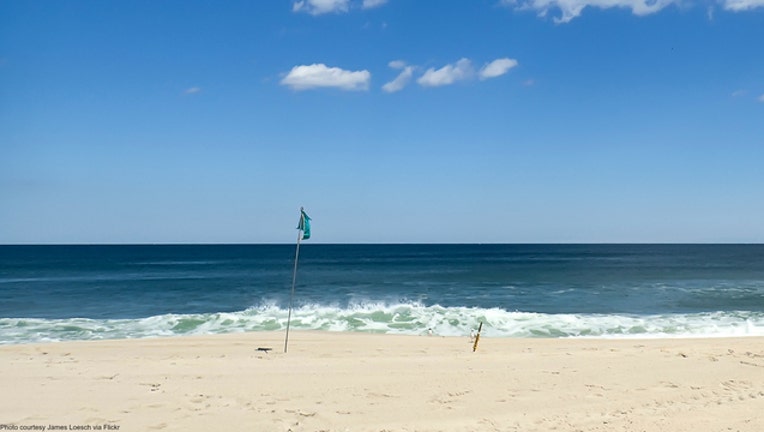Oceans will change color by the end of the century, scientists warn

Atlantic Ocean, New Jersey beach courtesy Flickr user James Loesch
FOX NEWS - Oceans will change color by the end of the century, as climate change significantly alters phytoplankton in the world's seas, according to a new study.
As ocean temperatures rise – perhaps as much as 4.8 degrees Fahrenheit in the aforementioned timeframe – the growth of the plankton will be heightened, making the blues and the greens of the ocean more vibrant, as sunlight interacts with water molecules and the blue part of the spectrum of sunlight hits it. Fewer phytoplankton cause the water to look bluer, while more give it a greener hue.
"The model suggests the changes won't appear huge to the naked eye, and the ocean will still look like it has blue regions in the subtropics and greener regions near the equator and poles," says lead author Stephanie Dutkiewicz, a principal research scientist at MIT's Department of Earth, Atmospheric, and Planetary Sciences and the Joint Program on the Science and Policy of Global Change, in a statement. "That basic pattern will still be there. But it'll be enough different that it will affect the rest of the food web that phytoplankton supports."
Areas that are already quite blue, especially subtropical areas (such as those between the Tropic of Cancer and Tropic of Capricorn) will become even bluer, according to the study. Regions that are nutrient-rich, including those near the poles, "may turn even deeper green, as warmer temperatures brew up larger blooms of more diverse phytoplankton."
The study was published in the scientific journal Nature Communications.
Satellites have been taking continuous measurements of the ocean's color since the late 1990s, the researchers noted. By looking at these measurements, the level of cholorophyll can be determined, which could be due to global warming or weather-related phenomena, such as an El Niño or La Niña, Dutkiewicz said.
"An El Niño or La Niña event will throw up a very large change in chlorophyll because it's changing the amount of nutrients that are coming into the system," Dutkiewicz said. "Because of these big, natural changes that happen every few years, it's hard to see if things are changing due to climate change, if you're just looking at chlorophyll."

